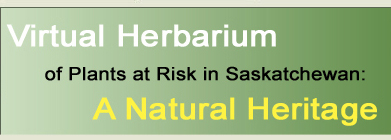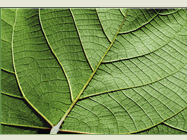
|

|

|

|

|

|

|
|
|
|
|
|
| Epilobium pygmaeum (Speg.) Hoch & Raven | Species Image Gallery (opens in a new window) |
||||||||||||||||||||||||||||||||||||||
| TAXONOMY | |||||||||||||||||||||||||||||||||||||||
| Family: | Onagraceae | ||||||||||||||||||||||||||||||||||||||
| Genus: | Epilobium pygmaeum | ||||||||||||||||||||||||||||||||||||||
| Species Synonyms: | Boisduvalia glabella (Nutt.) Walt. Boisduvalia glabella var. campestris (Jepson) Jepson Boisduvalia pygmaea (Speg.) Munz Oenothera glabella Nutt. |
||||||||||||||||||||||||||||||||||||||
| Common Names: | smooth willoweed smooth boisduvalia smooth spike-primrose |
||||||||||||||||||||||||||||||||||||||
| DISTRIBUTION | |||||||||||||||||||||||||||||||||||||||
| Canada: | south-central British Columbia, southeastern Alberta – south-central Saskatchewan | ||||||||||||||||||||||||||||||||||||||
| Saskatchewan: | southwestern – south-central Saskatchewan; Leader – Cypress Hills – Val Marie, Wood Mountain – Mortlach | ||||||||||||||||||||||||||||||||||||||
| Ecoregion: | Cypress Upland, Mixed Grassland, Moist Mixed Grassland | ||||||||||||||||||||||||||||||||||||||
| HABITAT | |||||||||||||||||||||||||||||||||||||||
| Saskatchewan: | moist to drying, bare, clayey mudflats in prairie and field depressions, slough bottoms, and shores | ||||||||||||||||||||||||||||||||||||||
| RARITY STATUS | |||||||||||||||||||||||||||||||||||||||
| Provincial
Status According to Harms (2003): |
Vulnerable | ||||||||||||||||||||||||||||||||||||||
| Nature Conservancy Status: | G5 N2 S2 | ||||||||||||||||||||||||||||||||||||||
| Saskatchewan
Species at Risk Status: |
None | ||||||||||||||||||||||||||||||||||||||
| COSEWIC Status: | None | ||||||||||||||||||||||||||||||||||||||
| Smooth willoweed is vulnerable because it is rare or uncommon in Saskatchewan. It is only somewhat regionally restricted extending to a limited extent into adjacent general regions of the province. Most local populations are small. Possible threats have been identified for this species. | |||||||||||||||||||||||||||||||||||||||
| SPECIES DESCRIPTION | |||||||||||||||||||||||||||||||||||||||
| Height: | 10 – 30 cm | ||||||||||||||||||||||||||||||||||||||
| Roots: | taproot | ||||||||||||||||||||||||||||||||||||||
| Stems: | annual, creeping and spreading, often branching near the base, hairless to hairy | ||||||||||||||||||||||||||||||||||||||
| Leaves: | alternate, sessile, 10 – 20 mm long, lance-shaped to oval, margin square-toothed to entire | ||||||||||||||||||||||||||||||||||||||
| Inflorescence: | spikes leafy, terminal, flowers crowded | ||||||||||||||||||||||||||||||||||||||
| Flowers: | inconspicuous; sepals 4, green; petals 4, < 3 mm long, purple or violet; pollen in tetrads; stigma head-like | ||||||||||||||||||||||||||||||||||||||
| Fruits: | capsule 6 – 8 mm long, 4-ribbed, pointed but not beaked; seeds many | ||||||||||||||||||||||||||||||||||||||
| |||||||||||||||||||||||||||||||||||||||